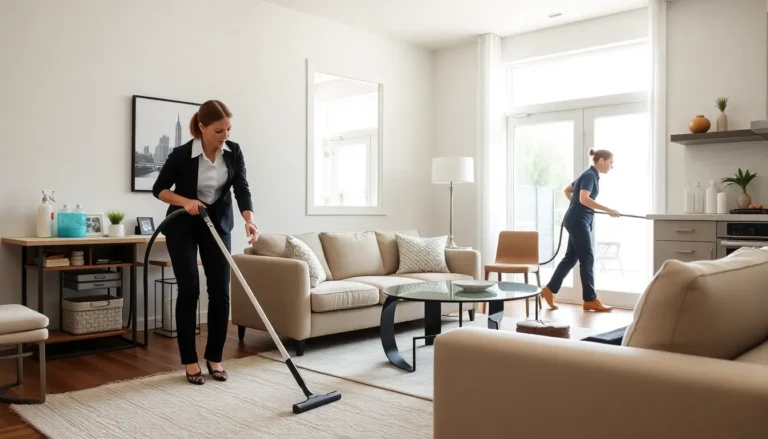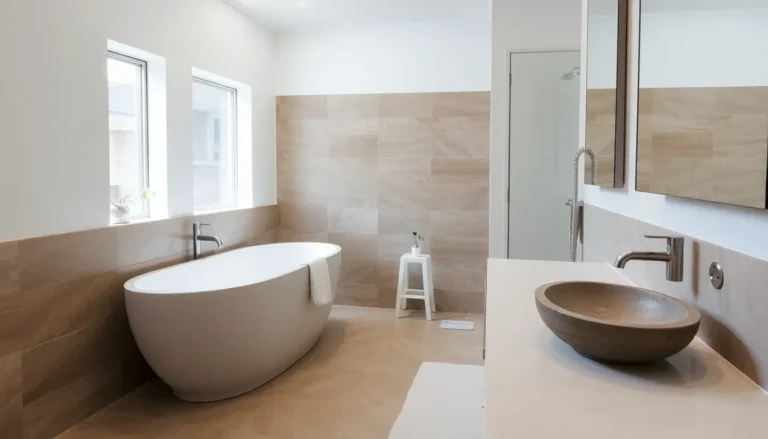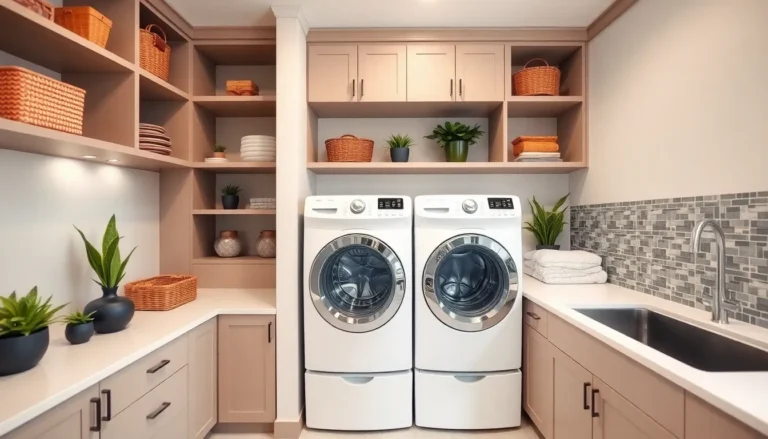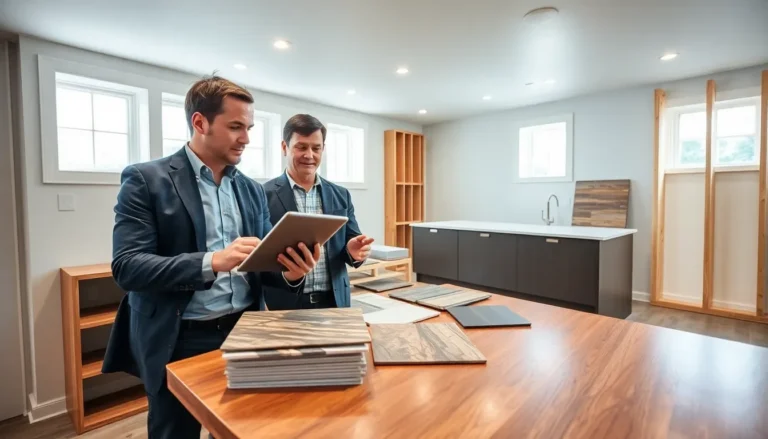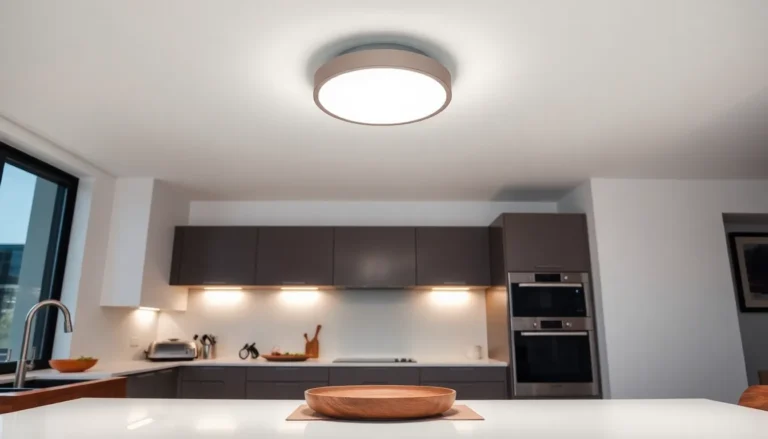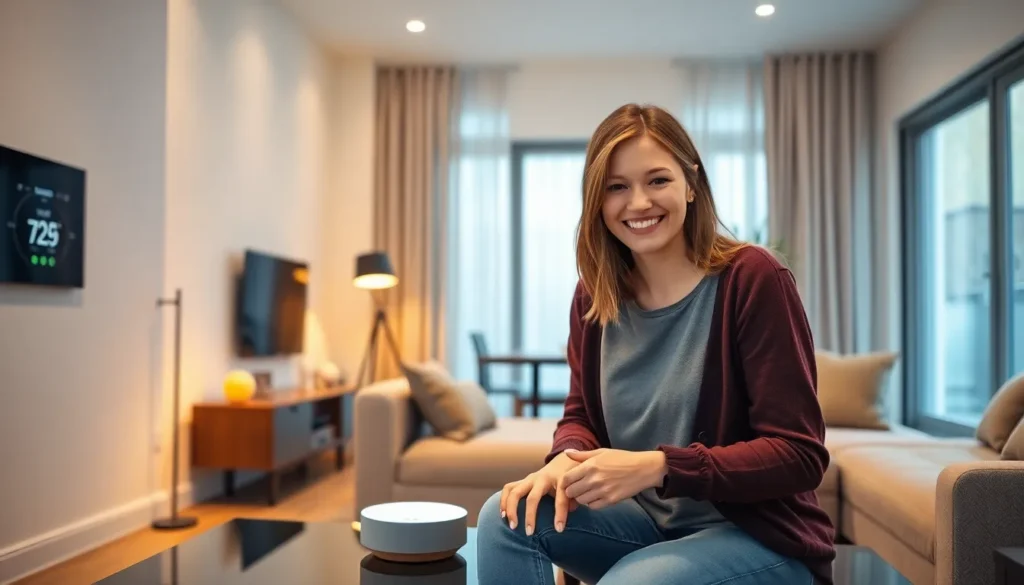Table of Contents
ToggleIn today’s fast-paced world, smart home renovation has become a game-changer for homeowners looking to enhance their living spaces. By integrating advanced technology into home design, they can create a more efficient, comfortable, and secure environment. From automated lighting systems to smart thermostats, these innovations not only elevate a home’s aesthetic but also significantly improve its functionality.
As more people embrace the concept of smart living, understanding the essentials of smart home renovation is crucial. It’s not just about adding gadgets; it’s about creating a cohesive ecosystem that simplifies daily tasks and enhances overall quality of life. With the right approach, homeowners can transform their spaces into intelligent havens that adapt to their needs, making life easier and more enjoyable.
Overview of Smart Home Renovation
Smart home renovation transforms living environments by integrating advanced technology into everyday spaces. Automation features provide increased efficiency, allowing homeowners to control systems such as lighting, heating, and security remotely. This integration enhances both aesthetic appeal and practical functionality.
Key elements of smart home renovation include:
- Automated Lighting: Smart bulbs and fixtures can be programmed to adjust based on time of day or occupancy, improving energy efficiency and user convenience.
- Smart Thermostats: These devices learn user preferences and adjust heating and cooling accordingly, resulting in energy savings and optimized comfort.
- Security Systems: Smart cameras, doorbells, and locks offer enhanced security, allowing homeowners to monitor their property in real-time from mobile devices.
- Home Assistants: Voice-activated systems facilitate hands-free control of various smart devices, streamlining everyday tasks and enhancing accessibility.
Each component of smart home renovation contributes to a cohesive ecosystem designed to simplify daily tasks while enhancing the overall quality of life. This approach not only creates sophisticated living spaces but also promotes energy efficiency and security, catering to modern lifestyle needs.
Benefits of Smart Home Renovation
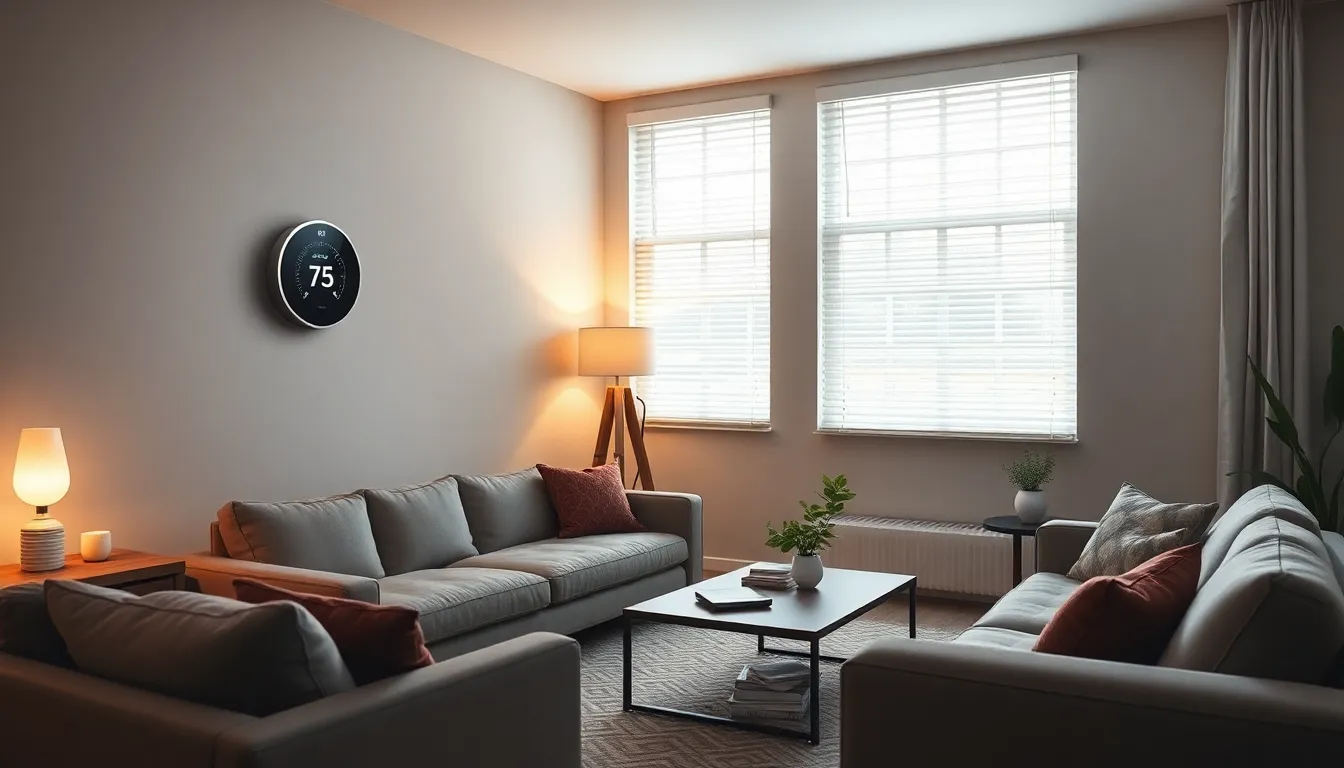
Smart home renovation offers significant advantages that improve daily living. The integration of technology not only enhances comfort but also promotes sustainability and safety.
Increased Energy Efficiency
Smart home renovation significantly boosts energy efficiency. Automated lighting systems utilize sensors to adjust brightness according to natural light levels, reducing unnecessary energy use. Smart thermostats optimize heating and cooling by learning user preferences and adjusting settings based on occupancy, which can lead to energy savings of up to 15%. Energy-efficient appliances, equipped with smart technology, minimize electricity consumption by providing real-time usage data, allowing homeowners to track and manage energy costs effectively. Smart blinds can also adapt based on weather conditions, further cutting energy costs.
Enhanced Security Features
Smart home renovation provides enhanced security features that protect properties and occupants. Smart security systems include cameras and sensors that allow real-time monitoring via smartphones, providing peace of mind. Automated door locks can grant access remotely to guests, while motion detectors trigger alerts in case of unauthorized access. Advanced lighting controls enable homeowners to simulate occupancy by scheduling lights to turn on and off. These integrated systems contribute to a comprehensive security ecosystem, deterring potential intruders and ensuring safety at all times.
Key Technologies in Smart Home Renovation
Smart home renovation relies on various technologies that enhance efficiency, security, and convenience within living spaces. Understanding these technologies is crucial for homeowners aiming to create intelligent, automated environments.
Home Automation Systems
Home automation systems serve as the backbone of any smart home renovation. These networks integrate multiple devices, allowing homeowners to control lighting, temperature, and security from a single interface. With systems like Z-Wave and Zigbee, devices can communicate wirelessly, promoting seamless operation. Home automation enables customized schedules, automatic adjustments, and remote access, significantly enhancing user experience. The integration of voice control through platforms like Amazon Alexa or Google Assistant further empowers users, making home management intuitive and straightforward.
Smart Appliances
Smart appliances significantly improve daily living through enhanced functionality. Refrigerators can monitor inventory, reducing food waste. Ovens can be programmed remotely, ensuring meals are ready upon arrival home. Washing machines offer app-based controls, allowing users to monitor cycles. Many smart appliances communicate through Wi-Fi or Bluetooth, providing insights into energy usage, promoting efficiency. The integration of these appliances not only simplifies routine tasks but also contributes to overall energy conservation, aligning with the goals of a sustainable home environment.
Planning Your Smart Home Renovation
Planning a smart home renovation requires careful consideration and strategic decision-making. Homeowners must focus on budgeting and selecting the right technology to achieve a seamless integration of smart features.
Budgeting for Smart Upgrades
Establishing a budget acts as a foundation for the renovation project. Homeowners should assess costs associated with materials, installation, and potential ongoing subscriptions. Including the following elements in the budget ensures a comprehensive financial plan:
- Initial Purchase Costs: Determine expenses for devices like smart thermostats, security cameras, and smart lighting.
- Installation Fees: Factor in professional installation for complex systems that may require technical expertise.
- Ongoing Maintenance: Account for any subscription services or software updates necessary for device functionality.
- Energy Savings: Predict potential savings from efficient systems, which can partially offset expenses over time.
Choosing the Right Technology
Selecting appropriate technology enhances the effectiveness of smart home renovations. Homeowners should evaluate various options based on compatibility, usability, and scalability. Key considerations include:
- Compatibility: Verify that devices work seamlessly with existing systems, such as Wi-Fi networks and home automation hubs.
- User Interfaces: Choose technology with intuitive user interfaces, enabling easy control and monitoring through smartphones or voice commands.
- Scalability: Opt for systems that allow easy additions in the future, accommodating changes in technology and user preferences.
- Security Features: Prioritize devices that offer robust security features, maintaining data privacy and protecting the home network.
These focused decisions lead to a more effective smart home renovation, ensuring a sophisticated and functional living space.
Common Challenges in Smart Home Renovation
Smart home renovation presents several challenges that homeowners must navigate. Understanding these challenges can streamline the renovation process and enhance overall satisfaction.
- Integration Issues
Integration issues arise when attempting to connect various smart devices. Products from different manufacturers often use incompatible communication protocols. Ensuring devices can communicate effectively requires careful selection and sometimes additional hubs for seamless integration.
- Cost Management
Cost management remains a significant challenge. Smart devices and installation expenses can accumulate quickly. Homeowners must budget for initial investments while considering ongoing maintenance and potential upgrades, which can lead to unexpected expenditures.
- Technical Expertise
Technical expertise is necessary for successful implementation. Not all homeowners possess the necessary skills for installation and configuration. Hiring professionals can ensure proper setup, but this adds to overall renovation costs.
- Security Concerns
Security concerns related to smart home devices persist. Vulnerabilities in products can expose homes to cyber threats. Homeowners must prioritize investing in secure products and regularly update software to mitigate risks associated with compromised systems.
- Compatibility Challenges
Compatibility challenges can complicate the renovation process. The rapid evolution of technology can result in legacy devices becoming obsolete quickly. Homeowners must ensure that all selected devices function harmoniously to maintain an efficient smart environment.
- User Adaptation
User adaptation poses a challenge for some homeowners. New technology can require a learning curve that may feel overwhelming. Providing user-friendly interfaces and training can help ease this transition, ensuring that homeowners fully utilize their smart systems.
- Environmental Factors
Environmental factors, such as Wi-Fi connectivity, can affect performance. Homes with thick walls or located in rural areas may experience connectivity issues. Strategic placement of routers and repeaters can enhance signal strength and device functionality.
- Regulatory Compliance
Regulatory compliance is essential in some areas. Local building codes may dictate specific installation practices or device use. Homeowners must research these regulations thoroughly to avoid future legal issues.
By addressing these common challenges, homeowners can navigate the complexities of smart home renovation more effectively, ensuring a more rewarding and efficient experience.
Conclusion
Smart home renovation offers homeowners a unique opportunity to elevate their living spaces while embracing modern technology. By integrating smart features like automated lighting and advanced security systems, they can create environments that are not only aesthetically pleasing but also highly functional.
The benefits extend beyond convenience to include significant energy savings and enhanced safety. As homeowners navigate the complexities of this renovation journey, understanding the right technologies and addressing potential challenges will lead to a successful transformation.
Ultimately, investing in smart home renovations is a step toward a more efficient and enjoyable lifestyle. With the right planning and execution, it’s possible to create a home that truly meets the demands of today’s fast-paced world.

